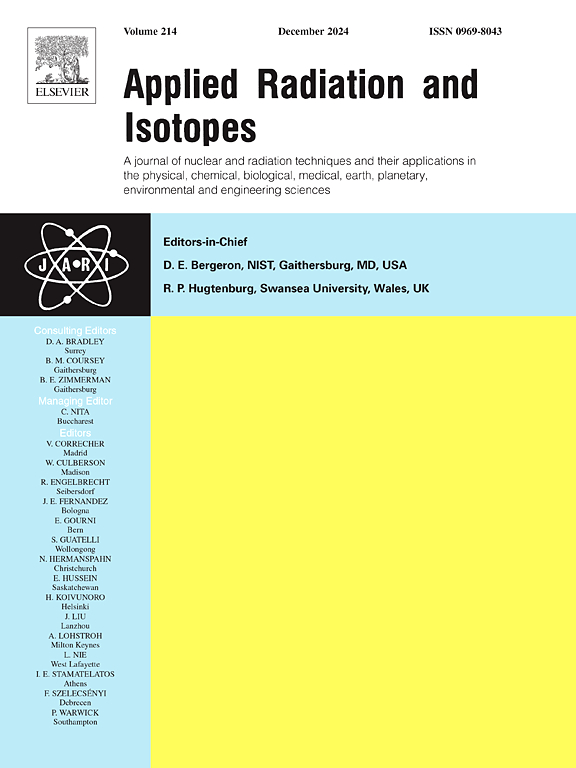基于 ACO 的特征选择和神经网络建模,用于石油工业中基于伽马射线的管道精确监测。
IF 1.6
3区 工程技术
Q3 CHEMISTRY, INORGANIC & NUCLEAR
引用次数: 0
摘要
这项研究提出了一种新颖的技术,用于提高石油管道监测能力,这是石油和天然气领域的一项重要活动。通过蒙特卡罗模拟,该作品细致地记录了来自不同石油产品和体积比的管道测试环境的数据。我们将所介绍的技术用于将四种石油产品--乙二醇、汽油、原油和燃气油--以不同的体积分数混合,以精确确定它们的体积比。数据采集完成后,将提取信号的许多特征,包括平均值、标准偏差、自相关性、过零率、主频、功率谱密度、谐波噪声比、跨频耦合、峰-峰振幅和下降时间。为了选择最佳特征,我们采用了一种利用蚁群优化的创新方法,系统地识别出信息量最大的特征组合,用于体积比预测。这些精心选择的特征将作为多层感知器(MLP)神经网络的输入,该网络的任务是准确确定管道内容物的体积比。值得注意的是,该方法展示了显著的功效,体积比确定的均方根误差 (RMSE) 小于 0.52。这一重大发现不仅强调了所提方法的稳健性,而且有望彻底改变管道监测技术,为石油行业的运营提供前所未有的准确性和效率。因此,这项研究代表了该领域的一个关键进步,对石油和天然气行业的学术研究和实际应用都具有深远影响。本文章由计算机程序翻译,如有差异,请以英文原文为准。
ACO-based feature selection and neural network modeling for accurate gamma-radiation based pipeline monitoring in the oil industry
This work presents a novel technique to improve oil pipeline monitoring capabilities, a vital activity in the oil and gas sector. Using Monte Carlo simulations, the work meticulously records data from a pipeline testing environment with various petroleum products and volume ratios. We apply the presented technique to mix four petroleum products—ethylene glycol, gasoline, crude oil, and gasoil—in different volumetric fractions to precisely determine their volume ratios. Many characteristics of the signal, including its mean, standard deviation, autocorrelation, zero-crossing rate, dominant frequency, power spectral density, harmonic-to-noise ratio, cross-frequency coupling, peak-to-peak amplitude, and fall time, are extracted after data collection. To select optimal features, an innovative approach utilizing ant colony optimization is deployed, systematically identifying the most informative feature combinations for volumetric ratio prediction. These meticulously chosen features serve as inputs to a multilayer perceptron (MLP) neural network tasked with accurately determining the volume ratio of the pipeline contents. Remarkably, the methodology showcases remarkable efficacy, with the root mean square error (RMSE) in volume ratio determination found to be less than 0.52. This significant finding not only underscores the robustness of the proposed approach but also promises to revolutionize pipeline monitoring techniques, offering unprecedented accuracy and efficiency in oil industry operations. This research thus represents a pivotal advancement in the field, with far-reaching implications for both academic research and practical applications within the oil and gas sector.
求助全文
通过发布文献求助,成功后即可免费获取论文全文。
去求助
来源期刊

Applied Radiation and Isotopes
工程技术-核科学技术
CiteScore
3.00
自引率
12.50%
发文量
406
审稿时长
13.5 months
期刊介绍:
Applied Radiation and Isotopes provides a high quality medium for the publication of substantial, original and scientific and technological papers on the development and peaceful application of nuclear, radiation and radionuclide techniques in chemistry, physics, biochemistry, biology, medicine, security, engineering and in the earth, planetary and environmental sciences, all including dosimetry. Nuclear techniques are defined in the broadest sense and both experimental and theoretical papers are welcome. They include the development and use of α- and β-particles, X-rays and γ-rays, neutrons and other nuclear particles and radiations from all sources, including radionuclides, synchrotron sources, cyclotrons and reactors and from the natural environment.
The journal aims to publish papers with significance to an international audience, containing substantial novelty and scientific impact. The Editors reserve the rights to reject, with or without external review, papers that do not meet these criteria.
Papers dealing with radiation processing, i.e., where radiation is used to bring about a biological, chemical or physical change in a material, should be directed to our sister journal Radiation Physics and Chemistry.
 求助内容:
求助内容: 应助结果提醒方式:
应助结果提醒方式:


